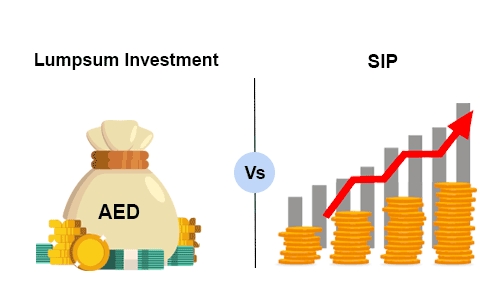Equity vs Debt Mutual Funds - Know more about the list of major difference between equity and debt mutual funds, which is the better option for you and other important details.
ULIP vs SIP – Which One Should You Choose?
Beyond the traditional means of investment, ULIP and SIP have recently emerged as two potent modern options for investment. These two investment options typically offer a greater return as compared to fixed and recurring deposits and can help meet your short-term and long-term financial goals with the ease of making small periodic investments.
Both these investment ventures seem to have several similarities. However, taking a closer look at them, both of them also have multiple distinct features. Where ULIP offers the benefit of insurance and investment in one, and SIPs are highly flexible and allows the investor to tap into all possible venture related to mutual fund investment.
Table of Content
So, if you are planning to invest in either or both, then getting a fair idea of ULIP vs SIP is highly important for you. We will attempt to understand both of these ventures in detail today and draw a proper comparison to help you pick one. Let’s get started.
Features and Benefits of ULIPs
Before moving on to the discussion of ULIP vs SIP, let's understand the benefits and features of ULIPs first –
You Can Choose Your Preferred Asset Class
One of the most significant advantages of ULIP is that it gives you the flexibility to choose your preferred asset class per your risk appetite. For example, you can select equities if you wish to invest aggressively. If you like moderate-risk options, debt funds are a suitable option for you. You also have the option to switch between various funds within the same policy when ULIPs are concerned.
You Can Opt for Partial Withdrawals
With a ULIP investment plan, you are entitled to opt for partial withdrawals after the compulsory lock-in period in case of emergencies. However, you can only withdraw a certain sum according to your needs. While there aren't any rigid guidelines to follow for early withdrawals, huge lump-sum withdrawals can lead to policy termination in certain cases.
You Can Enjoy Dual Benefits
You can enjoy the dual benefits of both investment and insurance with ULIPs. Here, a portion of your premium goes towards investment while the other is set aside for the insurance policy for building the death benefit.
Easy Add-ons
You can easily modify your investment portfolio as well as insurance benefits when a ULIP is concerned. A ULIP policyholder can top-up to their initial assured sum to customise the plan benefits and or change the investment portfolio as per their changing needs.
Advantages of SIP
Now that we have understood the benefits of a Unit Linked Insurance Plan, let’s move on to the features of Systematic Insurance Plans aka SIPs -
- Pocket-Friendly Investment - If you are a budding investor then SIP can be a great option for you. The primary reason for this is you can start your investment with a small amount. Monthly SIPs are available for as low as AED 100. The monthly contribution you have to make will depend on the total investment amount chosen and the tenure of the SIP.
- Helps Develop Saving Habits - You can inculcate regular saving habits once you start investing in a SIP. Regular savings are essential to building your desired corpus, creating wealth in the long term and catering to your future financial goals. Since you are entitled to devote a certain amount towards your SIP monthly, you slowly develop a habit of saving a certain amount regularly.
- Evens Out Short-Term Fluctuations - A notable advantage of SIP is that it targets long-term investment and wealth creation. As a result, SIPs iron out all short-term market fluctuations. This ultimately protects your returns from adverse market scenarios and results in decent ROI over the long term.
ULIPs vs SIPs - A Comparative Analysis
Now that we have understood the basic features and benefits of SIPs and ULIPs, let's shift the focus to the ULIP vs SIP discussion. Here is a comparative analysis of these two investment options –
- Plan Structure - The major difference between ULIP and SIP is the structure of the plan. ULIP is an investment and insurance plan. On the other hand, SIP is purely an investment instrument.
- Investment Tenure - Another point of difference between ULIP and SIP is the tenure of the investment. ULIPs are typically long-term investment and insurance plans. Whereas SIPs can be a short-term investment. The term can be as short as 2-3 years, depending on your preference.
- Withdrawal option - ULIPs allow you to withdraw the returns partially after completing the mandatory lock-in period. In the case of SIP, the assured sum can be withdrawn anytime and can be arranged as a periodic payment schedule. Hence, while both investment options offer liquidity, SIPs are more flexible.
- Death Benefit - ULIP provides death benefits as specified in the policy. It is paid to the policyholder's dependents (beneficiaries) in case of their demise. On the contrary, beneficiaries of SIP investors do not get death benefits. The ULIP vs SIP comparison we just drew sheds light on the topic and will help you to get a clear understanding of both options. Note that the investment option you choose should resonate with your unique financial plans. Irrespective of the investment option you choose, always remember to read all the terms and conditions and invest as per your risk appetite for the best possible return. You can also get in touch with our financial experts to get a better understanding of the market and choose the right plan.
Policybazaar UAE – Helping you navigate the wilderness of the insurance world!
Ans: The following documents are to be provided to invest in mutual funds –
- Prospectus and Key Investor Information Document (KIID)
- Details about the selected legal entity for the fund
- Applicant’s legal responsibilities presentation and the fund’s internal processes
- Main statutory document (in Arabic)
- A filled-in application form for issuing the licence
Ans: While mutual funds are less risky compared to direct stock investments, they too involve a certain degree of risk like all investment options as the money is invested in equity, bonds, and other investment options. Moreover, the money invested in such funds is not federally insured. For this reason, it is advisable to understand the key aspects of investment and follow the diversification principle to minimise risk.
Ans: Since mutual funds are liquid assets, they can be sold and purchased anytime. However, before trading in them, it is recommended to read the policy document for exchange fees or redemption fees.
Ans: Debt funds are suitable mutual funds for people looking for safe investments and fixed returns at the same time. The money is invested in debt instruments like government bonds, debentures, and other fixed-income assets.

























